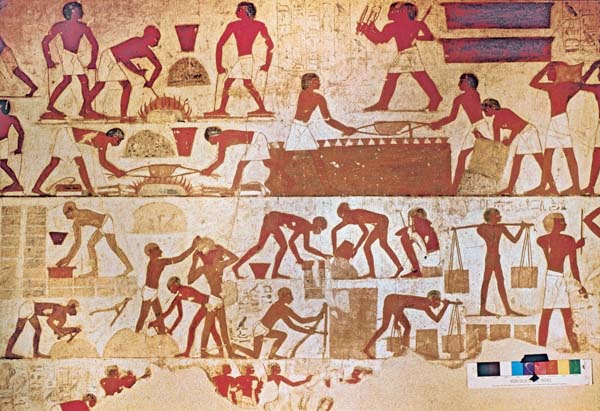Image Details

Erich Lessing/Art Resource, NY
“Hard labor in mortar and brick” (Exodus 1:14) was the lot of the Israelite slaves in Egypt. In the lower extreme right of this 15th-century B.C. wall painting from the tomb of Rekhmire, mayor of Thebes and vizier of Thutmose III, Egyptian overseers with sticks in their hands put foreigners to work making mud bricks to build the storehouse for the temple of Amun in Karnak. The overseer warns the workers, “The rod is in my hand; be not idle.”
The painting shows the various stages of the brick-making process. In the upper left of the bottom register, a Syrian prisoner/slave draws water from a pool. Others, among them a Nubian, work the moistened mud with some sort of tool. Another worker carries the prepared mud in a bucket on his shoulders to the brick-makers who shape the mud into bricks. The bricks are then stacked and left to dry in the hot Egyptian sun. When the bricks are properly set, they are carried off to the building project.
The upper register shows foundry workers who are crafting metal doors for the temple. At right, workers bring in Asiatic copper and gold. In the upper left, a worker stokes the fire with a stick, while on either side two other workers intensify the fire with a bellows. The bellows is inflated by pulling on the strings in the workers’ hands, and the air is then expelled when they step down on the inflated bellows.
Below them two other workers are melting bronze ingots over a furnace. The workers then lift the molten metal from the fire with two poles that serve as tongs. To the right they pour the molten metal into clay molds to cast the doors of the temple.
